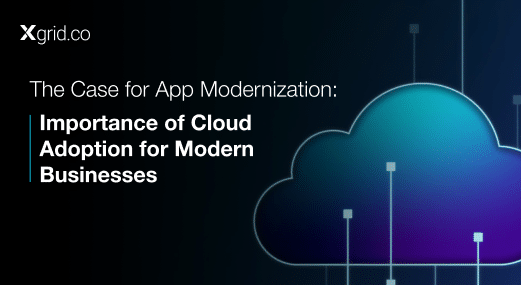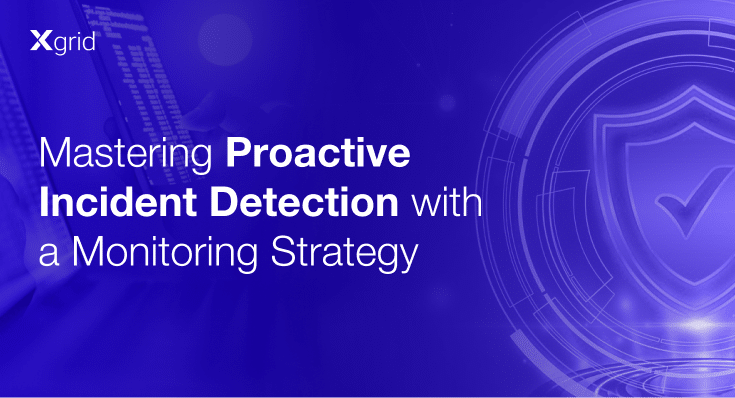Cloud Costs Management in DevOps: Best Practices and Techniques
Despite the soaring demand for cloud computing, only a mere 8% of organizations report having expertise in cloud computing tools. This gap in knowledge and experience has dire consequences for many businesses, leading to the unchecked growth of cloud costs. In 2021, it was revealed that a substantial 32% of cloud budgets were being wasted, with a troubling 75% of companies reporting an increase in this wastage.
In essence, effectively managing cloud costs must become the top priority for enterprises and SMBs alike. The key to optimizing cloud expenditure lies in adopting best practices, particularly for Software as a Service (SaaS) companies with DevOps teams. What exactly are those best practices? This article is your guide for that! Before we take a deeper dive into the blog itself, there is a concept you should be familiar with. It’s the concept of FinOps.
What is FinOps?
Naturally, FinOps, short for Financial Operations, is the art and science of managing the financial aspects of cloud computing. It involves tracking, analyzing, and optimizing cloud costs to align them with your organization’s business objectives. By understanding the drivers of cloud cost management and optimization, businesses can take proactive steps to reduce expenses while still meeting their operational needs. Partnering with DevOps Consulting Services can further enhance these efforts by providing expert guidance and strategies for effective cloud cost management.
Top FinOps Best Practices for Managing Cloud Costs
-
Monitor and Track Cloud Spend
Cloud cost monitoring forms the foundation of effective cost management strategies. You should always begin by monitoring and tracking your cloud spending meticulously. Understand how different services are used, identify cost drivers, and track user trends. This foundational step helps pinpoint areas for cost optimization, such as unused resources and services.
-
Implement Cost Optimization Strategies
Armed with insights from monitoring, implement cost optimization strategies. These can include leveraging discounts, using spot instances, scaling down unused services, and eliminating redundant resources. Analyze your company’s costs, identify waste and inefficiencies, streamline processes, and automate wherever possible.
-
Automate Cloud Cost Management
Never underestimate the power of automation! Automation is a powerful tool for managing cloud costs efficiently. It can help you identify cost-saving opportunities, automate resource provisioning, and streamline billing. Automation can also track resource utilization, identifying underutilized resources for recycling or termination.
-
Leverage Cost Control Tools
Explore cost control tools that provide insights into usage trends, set budget limits, and identify optimization opportunities. These tools are designed to help businesses track expenses, pinpoint inefficiencies, and implement cost-saving measures effectively.
-
Implement Resource Allocation Strategies
Allocate resources efficiently based on usage patterns and optimization strategies. Avoid over-provisioning and distribute resources where they are needed most. You gotta make sure that your 10% of resources are getting spent on things which require exactly 10% spend. And the rest are allocated properly.
-
Leverage Cloud Cost Forecasting
Cloud cost forecasting can provide valuable insights into future expenses. This allows for more accurate budgeting and planning, helping you avoid unexpected costs and seize cost-saving opportunities. Join groups and engage in regular webinars or podcasts dedicated to this topic.
-
Invest in Cloud Governance
Establishing robust cloud governance policies is a pivotal aspect of effective FinOps practices. These policies provide a structured framework that defines roles, responsibilities, and rules for cloud usage within your organization. They serve as guardrails to ensure that cloud resources are utilized optimally and in alignment with cost-saving objectives. Here’s why investing in cloud governance is paramount:
Now that we have discussed some general steps, let’s look at how we can make operations better.
Embedding FinOps in Cloud Operations
Embedding Financial Operations (FinOps) into your cloud operations means integrating specific cost control steps seamlessly into your workflows. Rather than treating cost management as a separate task, it becomes an inherent part of how you operate in the cloud environment. This approach ensures that cost considerations are taken into account at every stage of your cloud operations. It involves a proactive approach to managing cloud costs, encompassing long-term solutions like cost forecasting and medium to short-term activities such as budgeting, real-time monitoring, and gaining insights into your cloud environment. All these operations collectively form the discipline known as FinOps, focusing on aligning your cloud costs with your financial goals.
DevOps and the FinOps Culture
From a DevOps perspective, creating a culture where FinOps principles are embedded into the development and deployment of applications is crucial. This means that cost considerations become an integral part of the software development lifecycle. Developers, operations teams, and other stakeholders work collaboratively to ensure that the applications they build are not only functionally robust but also cost-efficient. By doing so, organizations can optimize cloud costs while maintaining agility and scalability, ultimately benefiting the entire organization and achieving a balance between innovation and financial prudence.
Mastering Cloud Cost Management Strategies with FinOps and Best Practices
Cloud computing is booming, with the market reaching $546.1 billion in 2022 and projected to grow by 21.7% in 2023. Yet, a lack of expertise in managing cloud costs is causing 32% of cloud budgets to go to waste. Only 8% of organizations claim expertise in cloud tools. To ensure a better cloud spend management, adopting FinOps (Financial Operations) practices is crucial.
FinOps: FinOps is about tracking, analyzing, and optimizing cloud costs to align with business goals. Top practices include monitoring spending, implementing cost-saving strategies, automating management, using cost control tools, allocating resources efficiently, and forecasting costs. Cloud governance is vital for rule enforcement and compliance.
Embedding FinOps: Embedding FinOps into cloud operations integrates cost control into workflows, ensuring cost considerations are part of every stage. It includes long-term forecasting and short-term budgeting, real-time monitoring, and insights into the cloud environment.
DevOps and FinOps Culture: In DevOps, a culture is created where cost considerations are integral to application development. Collaboration between developers, operations, and stakeholders ensures cost-efficient applications, optimizing cloud costs while maintaining innovation and scalability.





